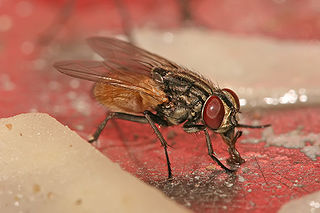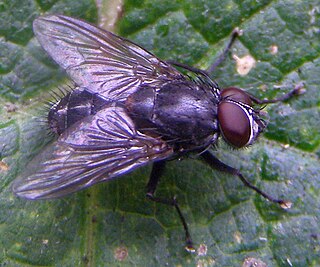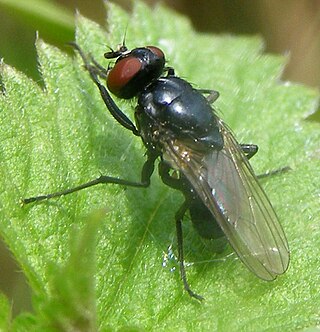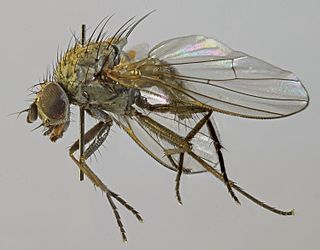
Muscini is a Tribe of flies from the family Muscidae.
Labigastera is a genus of flies in the family Tachinidae.

Eudasyphora is a large genus from the fly family Muscidae.
Dasyphora is a genus from the fly family Muscidae. There are currently 1,148 recorded instances of this fly by human observation, material sample, preserved specimen, or unknown source. The majority of these records are in northern North America and Europe.

Synthesiomyia is a small genus of true flies of the family Muscidae.

Phaonia siebecki is a species of fly which is distributed across parts the Palaearctic.

Phaonia subventa is a species of fly which is distribution across parts the Palaearctic.

Neomyia cornicina is a common species of fly which is distributed across many parts the Palaearctic. It has been introduced in the Nearctic.

Phaonia lugubris is a species of fly which is distribution across parts the Palaearctic.

Neoascia podagrica is a species of hoverfly.

Helina evecta is a fly from the family Muscidae.

Helina obscurata is a fly from the family Muscidae. They are diurnal.

Muscina prolapsa is a species of fly from the family Muscidae.

Muscina levida is a species of fly from the family Muscidae. It is found in Europe.
Microsoma exiguum is a species of fly in the family Tachinidae.

Hydrotaea diabolus is a fly of the family Muscidae. Its larvae have been found in pig, cow and horse manure. It is found in the Palearctic.

Azelia nebulosa is a species of fly in the family Muscidae. It is found in the Palearctic.

Phaonia errans is a fly from the family Muscidae. It is found in the Palearctic.

Phaonia incana is a fly from the family Muscidae. It is found in the Palearctic.

Azelia is a genus of flies belonging to the family Muscidae.

















